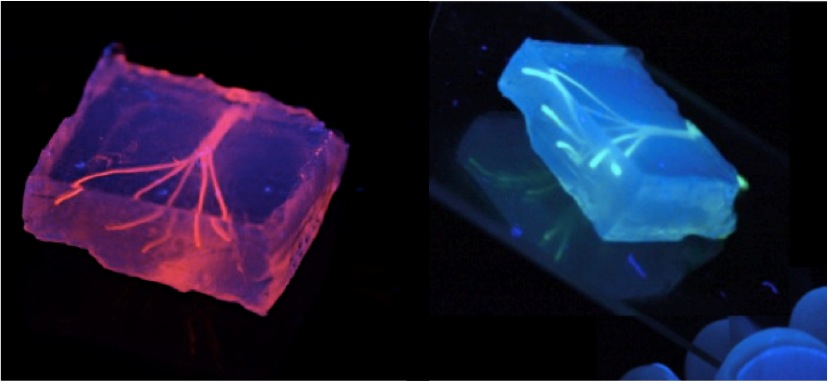3D-Printed Blood Vessels Could Be Used for Transplants

Using 3D-printing methods, researchers have created artificial blood vessels in a lab. The bioprinted structures could be used for transplants or for testing new drugs, scientists say.
Blood vessels are vital parts of the body's circulatory system that supply the organs with nutrients and remove waste. Scientists have developed artificial tissue from the heart, liver and lungs, but creating a synthetic network of blood vessels to support these organs has been a challenge.
"That's where technologies like bioprinting come in," said Ali Khademhosseini, a biomedical engineer at Brigham and Women's Hospital in Boston, and senior author of a new study published online this month in the journal Lab on a Chip. "We're trying to create the right architecture for tissues." [7 Cool Uses of 3D Printing in Medicine]
Previous attempts to 3D-print blood vessels take one of two forms, Khademhosseini told Live Science. Researchers either print the actual cells, or they print a structure on which to grow cells, which later dissolves. But printing cells often damages or kills them, and the dissolving structures may contain substances that are harmful to cells, Khademhosseini said.
Printing tissue
In this study, Khademhosseini and his team took a different approach. They printed a template for cell growth that could be pulled out later without damaging the cells.
The researchers printed a network of tiny channels out of agarose, a polymer made from seaweed often used for culturing cells, to serve as a template for the artificial blood vessels, and then embedded the network of passages into a gel. On the gel structure, they grew mouse cells that will develop into bone.
Sign up for the Live Science daily newsletter now
Get the world’s most fascinating discoveries delivered straight to your inbox.
The resulting blood vessels could effectively transport fluids, support living cells and allow the cells to mature, the researchers said. Furthermore, the cells rearranged themselves into a layer of cells on the templates.
The need for artificial blood vessels is significant. In medicine, the state-of-the-art treatment for faulty blood vessels is a tissue donor transplant, Khademhosseini said. But a shortage of donors exists, and for patients who are lucky enough to receive a transplant, their immune system may reject the foreign tissue.
With the high demand for tissues for transplants, obtaining blood vessels for testing drugs or cosmetics before they are used in humans is nearly impossible, Khademhosseini said.
Not there yet
While promising, this new method of printing blood vessels has its limitations. For example, they can't print very small blood vessels, like capillaries, because the materials aren't strong enough, the researchers said. However, if they print larger vessels, the cells could rearrange to form smaller ones around them.
Another challenge is that the current printing method requires an opening to remove the template structure.
The researchers are working on improving the resolution of their bioprinting method and the materials they use, as well as testing the 3D-printed structures with living cells, and ultimately in living animals.
"We're far away from humans, but I think [the technology] would be translatable," Khademhosseini said.
Follow Tanya Lewis on Twitter and Google+. Follow us @livescience, Facebook & Google+. Original article on Live Science.











